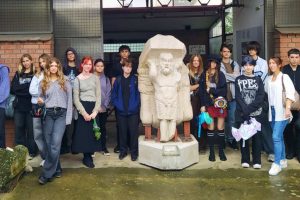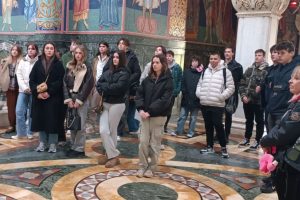
Monitoring Student Workload During Distance Learning Implementation
- Posted by Antoni MP_Barili
- Categories Blog
- Date June 1, 2020
When the epidemiological situation in the country required us to suspend direct educational work and transition to distance learning, we were tasked with finding the best solutions for communication with students and parents, as well as for implementing distance learning and providing all necessary forms of support. The basic requirement that needed to be met was grounding educational work in existing curricula and programs, while the methods of work and monitoring needed to be adapted.
Adaptation as a key mechanism imposed itself in our daily lives, not only in the education process. When sudden life events disrupt our usual functioning, we strive to restore balance. We assign meaning to a particular event and represent it in our own way, we try to respond to the demands of the external environment, we surround ourselves with people important to us (family members, friends, and all people who can help us in such situations), in order to maintain a sense of emotional balance and stability, and especially a sense of control (Vlajković, 2005). This is precisely why we all react differently to the same life events, because we assign different meanings to them.
During the process of adapting to the new situation, students faced a challenge called “Distance Teaching” and “Distance Learning.” Monitoring student workload became an important item in planning, implementing, and evaluating instruction. The exclusive use of information and communication technologies in the teaching process represented a turning point in work that some students eagerly awaited, while for others it was truly a crisis situation they had to struggle with. In the first days of distance learning implementation, an assessment was made of available resources for conducting classes regarding information and communication technology, with support and recommendations from the Ministry of Education and the Institute for Education Improvement, as well as from our students, who exchanged ideas and experiences with their teachers and professional associates.
Social networks, various applications and platforms were included in the implementation of teaching, which made classes more diverse and interesting for a certain number of students, like a kind of experiment in which they suddenly found themselves. Their interest and dedication resulted in significant progress in work and learning, increased intrinsic motivation, and the application of a research approach in work and problem-solving. However, in addition to good results, a certain number of students miss direct work with teachers, stating that they prefer that way of working and miss school. Among these students, it has been observed that they have more difficulty overcoming obstacles in this way of working and communicating, react more emotionally, and have a pronounced experience of isolation. They need special support in the form of enhanced educational work.
Therefore, it is a fact that we evaluate and interpret everything that happens to us in a specific way that is unique to us, we look at the world through the lens of personal experience, personality traits, and attitudes. In the context of changing work methods and monitoring in the educational process, we can say that students interpret the current situation in accordance with the learning style they have developed as their dominant style. Also, we can say that the degree of student satisfaction with the current way of working and their perception of workload is correlated with the style that is dominant in their work and learning. Students whose learning is dominated by visual learning style (thinking in images) or auditory learning style (experiencing reality through hearing) are more interested in this way of working, while students who prefer kinesthetic learning style (through experience and practical work) are more interested in direct work with teachers, at school.
In practice, it has been shown that adapting teaching to learning styles is a priority in modern education. Teachers who adapt their teaching to their students truly notice positive changes and exceptional progress. The experience gained in implementing distance learning will be useful in further planning and implementation of work, as it will definitely improve the quality of teaching. Through our example, we show our students that crisis is an opportunity for us to develop and grow together, that we primarily learn from it and become stronger. That we improve teaching and learning through joint efforts. That like any other family, we learn from each other and develop our potential, because every crisis is an opportunity and a turning point.
Daliborka Srdić – school pedagogue
You may also like

Sremska Mitrovica, Zasavica, Vrdnik Tower – 2025-26

Natural History Center 2024-25

